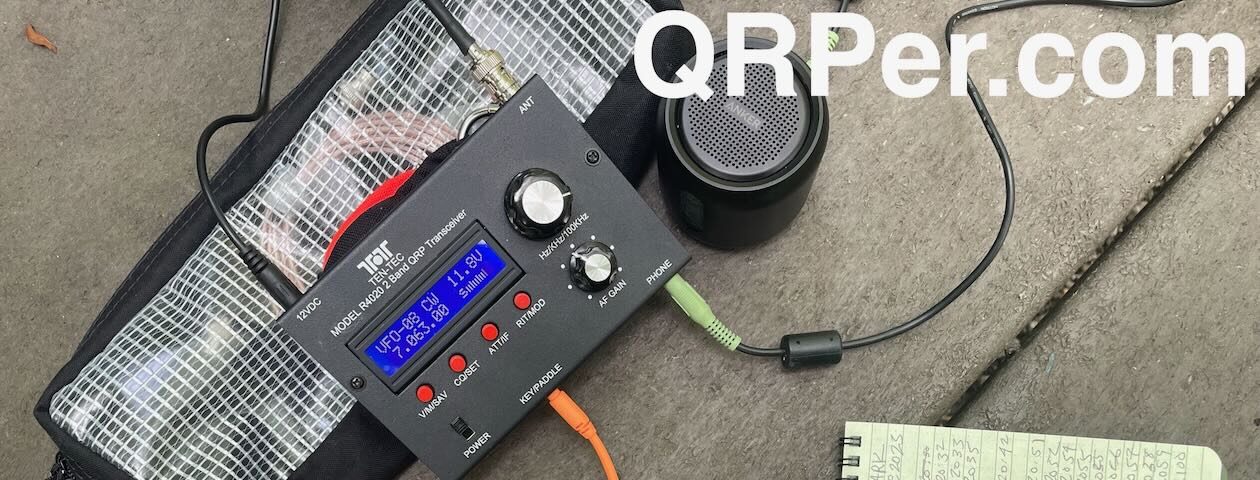A couple weeks ago, I posted a video where I compared the Elecraft KH1 and KX2;I mentioned that it was the most requested comparison I’d received after I started taking the Elecraft KH1 to the field.
The second most requested KH1 comparison focused on various Mountain Topper series models: the MTR-3B, MTR-4B and MTR-5B.
That’s what we’ll take a look at in the comparison video below!
Basic KH1 ($550)
So when folks have asked me how the KH1 compares with a Mountain Topper, I think of the basic KH1 ($550 US) package, not the ($1100 US) “Edgewood” package like I have.
Why?
Without the Edgewood package, the KH1 lacks the internal ATU, coils for the whip antenna, internal battery, internal battery charger, logging tray, whip antenna, counterpoise, case, and attachable paddles.
In short, the basic KH1 is a 5 band CW-only radio, much like Mountain Topper series radios–in fact, a lot like my 5 band Mountain Topper!
This is why, in my video below, I base the comparison on the basic KH1 package which includes the KH1, power cord, USB cable, and manual only.
Video
I should note that this video primarily focuses on making a purchase decision–it’s not a receiver comparison or in-depth reviews:
Click here to view on YouTube.
A few notes…
The video above contains a lot more detail, but at the end of the day, you can’t make a “bad” choice here. All of these are fantastic radios for someone who enjoys ultra-light operating.
The Elecraft KH1 is more a more feature-rich transceiver; it has adjustable filters, attenuation, CW encode/decode, mini pan/scan, general coverage, SWR/power meter, more message memories, internal logging options (soon), user upgradable firmware, an internal speaker, and much, much more. On top of that, the KH1 can be upgraded to become a complete shack-in-a-box radio with internal battery, charger, ATU, attachable whip antenna, and attachable paddles.
That said, even thought the Mountain Topper radios are spartan in terms of features compared with the Elecraft KH1, they get the job done effectively. Their feature set is laser-focused on providing a SOTA activator everything they need in order to complete an activation and not a lot else. They will also operate effectively on the smallest of batteries and consume a mere 20-17 mA in receive–proper battery misers! For more of my thoughts of the Mountain Topper, check out my MTR-4B review and my “Getting To Know You” report on the MTR-3B.
Again, you can’t go wrong with a Mountain Topper or a KH1: they’re both made by fantastic companies and have a loyal customer base for good reasons.
Price
 The Elecraft KH1 base model (40, 30, 20, 17, and 15 Meters) is $550, the complete, fully-loaded, “Edgewood” package is $1,100. They are currently on backorder, but Elecraft does note that they intend to start shipping again mid-January 2024. Click here for the latest news about lead times.
The Elecraft KH1 base model (40, 30, 20, 17, and 15 Meters) is $550, the complete, fully-loaded, “Edgewood” package is $1,100. They are currently on backorder, but Elecraft does note that they intend to start shipping again mid-January 2024. Click here for the latest news about lead times.

The LnR Precision MTR-4B (80, 40, 30, and 20 Meters) is the latest Mountain Topper radio and the current model at time of publishing. You can purchase these new for $369 US. LnR Precision builds roughy 25 per month when they have the parts. You will need to follow LnR closely in order to be updated when a production run is shipping. Each time units are offered, they’re snatched up in a matter of hours. You can find used Mountain Toppers out there, but pricing tends to be within 10-20% of the new price.
Thank you
 I hope you enjoyed this little comparison video and that it might help you make a purchase decision.
I hope you enjoyed this little comparison video and that it might help you make a purchase decision.
 Of course, I’d also like to send a special thanks to those of you who have been supporting the site and channel through Patreon and the Coffee Fund. While certainly not a requirement as my content will always be free, I really appreciate the support.
Of course, I’d also like to send a special thanks to those of you who have been supporting the site and channel through Patreon and the Coffee Fund. While certainly not a requirement as my content will always be free, I really appreciate the support.
As I mentioned before, the Patreon platform connected to Vimeo make it possible for me to share videos that are not only 100% ad-free, but also downloadable for offline viewing. The Vimeo account also serves as a third backup for my video files.
Thanks for spending part of your day with me!
Cheers & 72,
Thomas (K4SWL)









